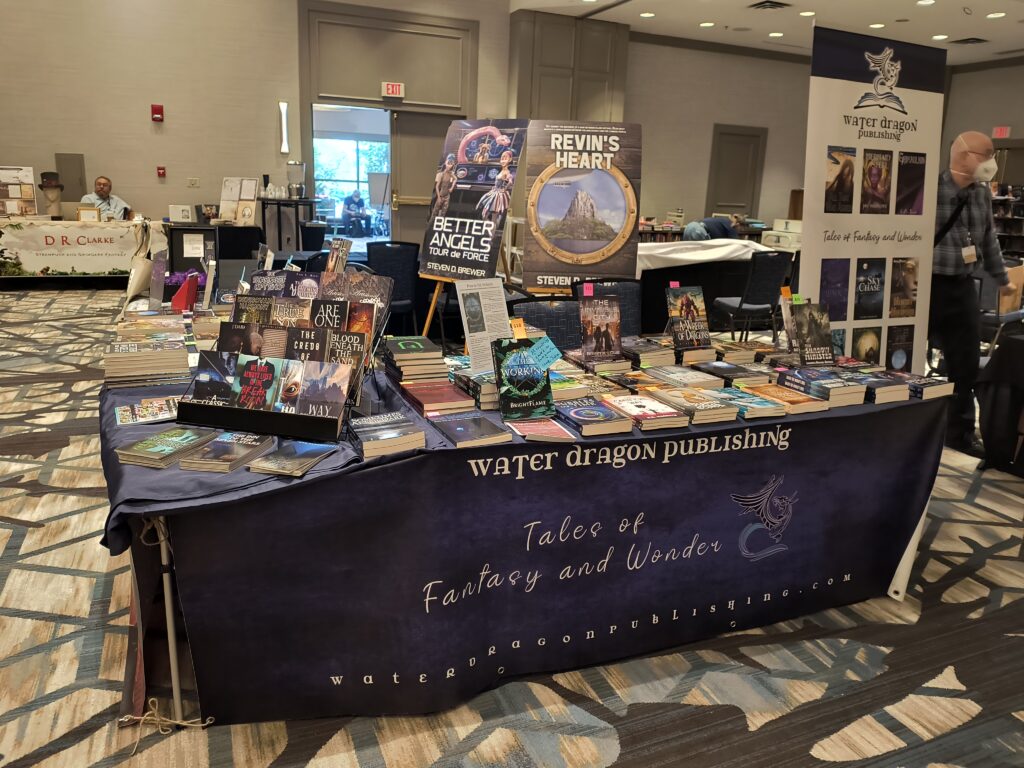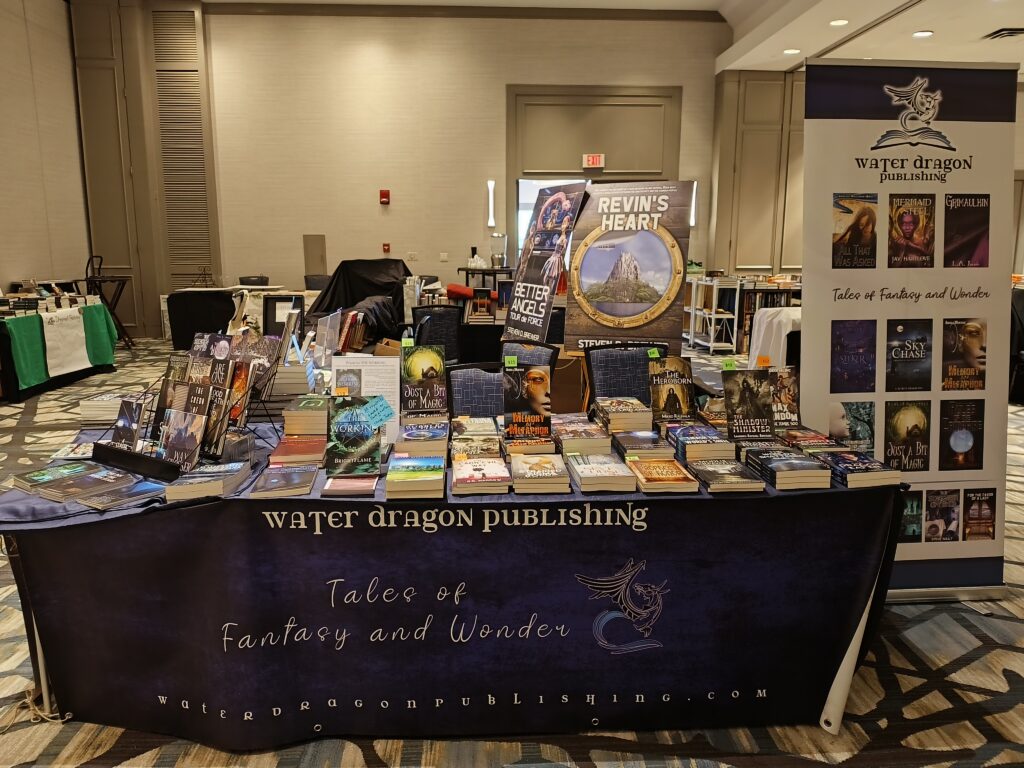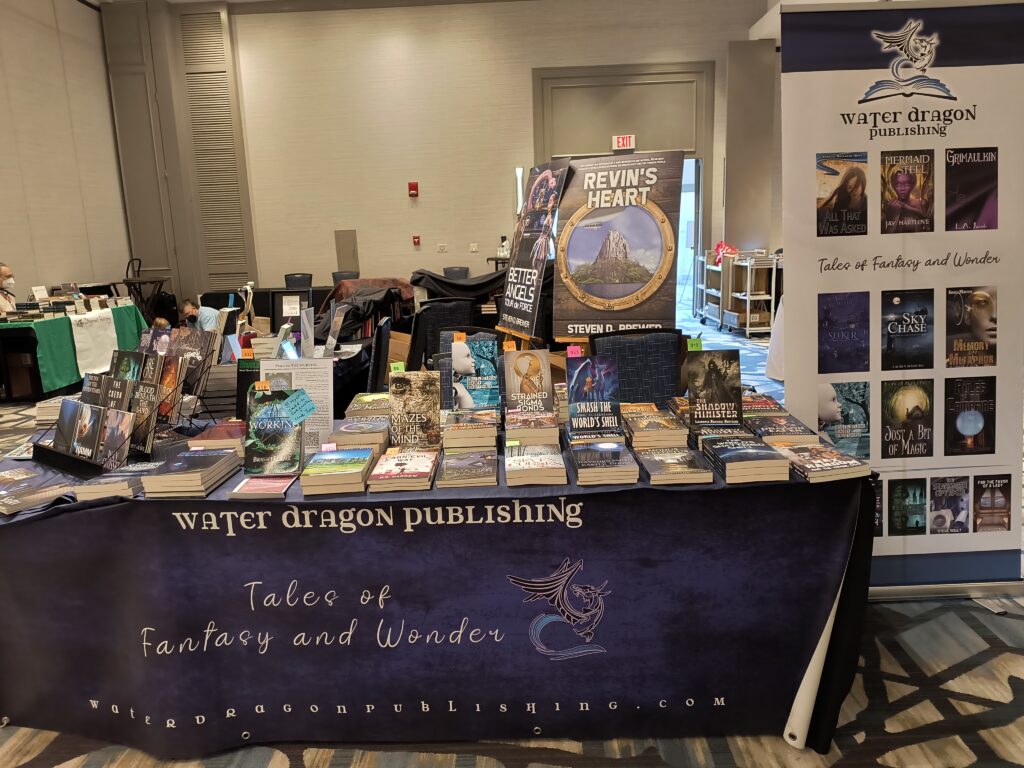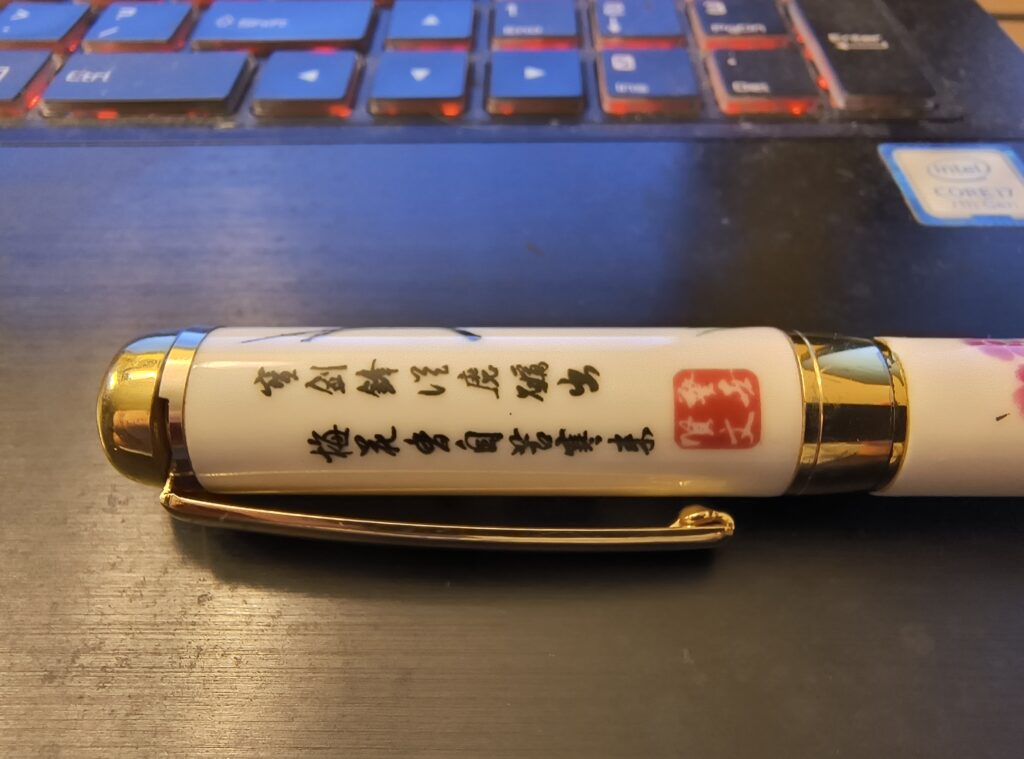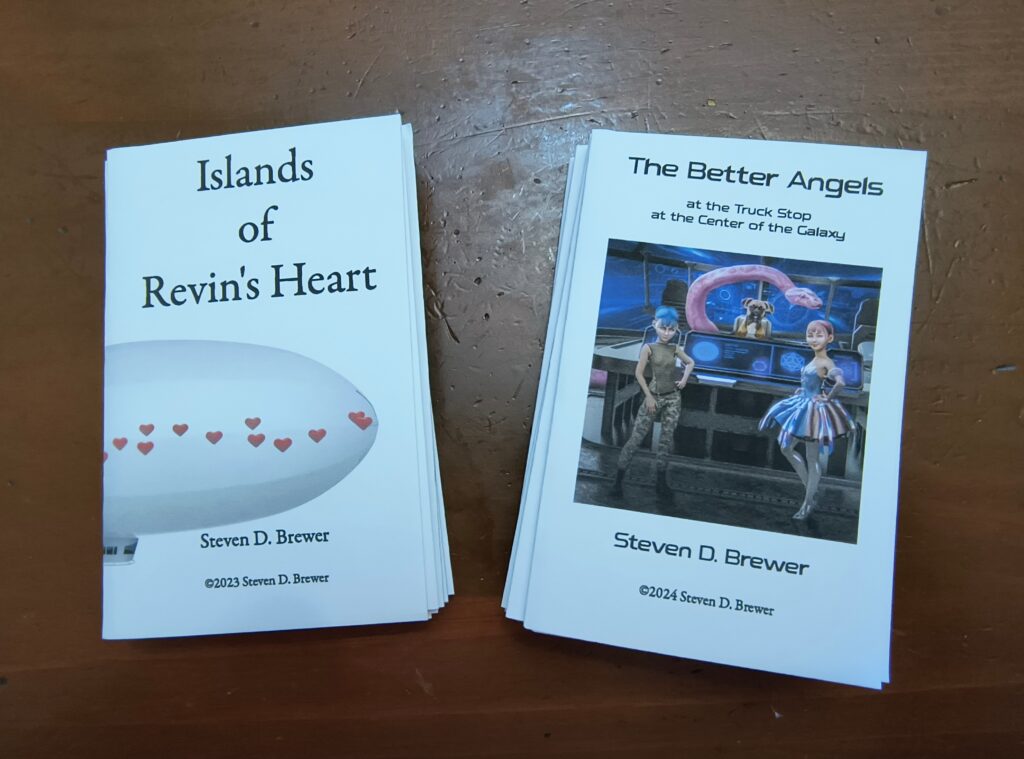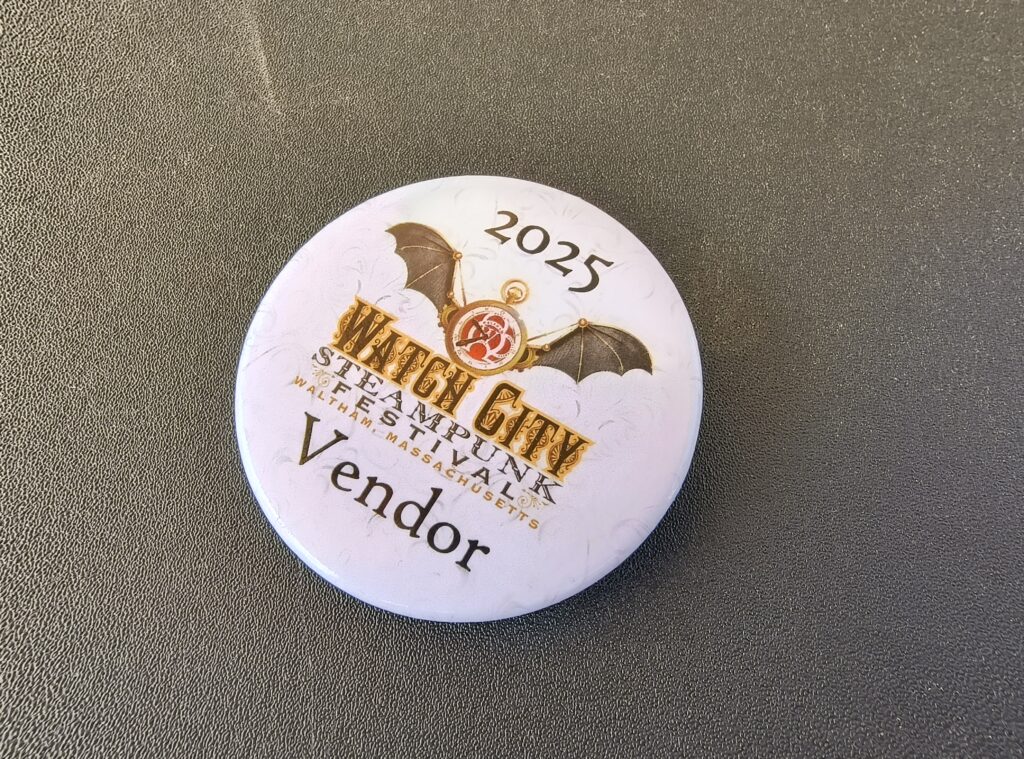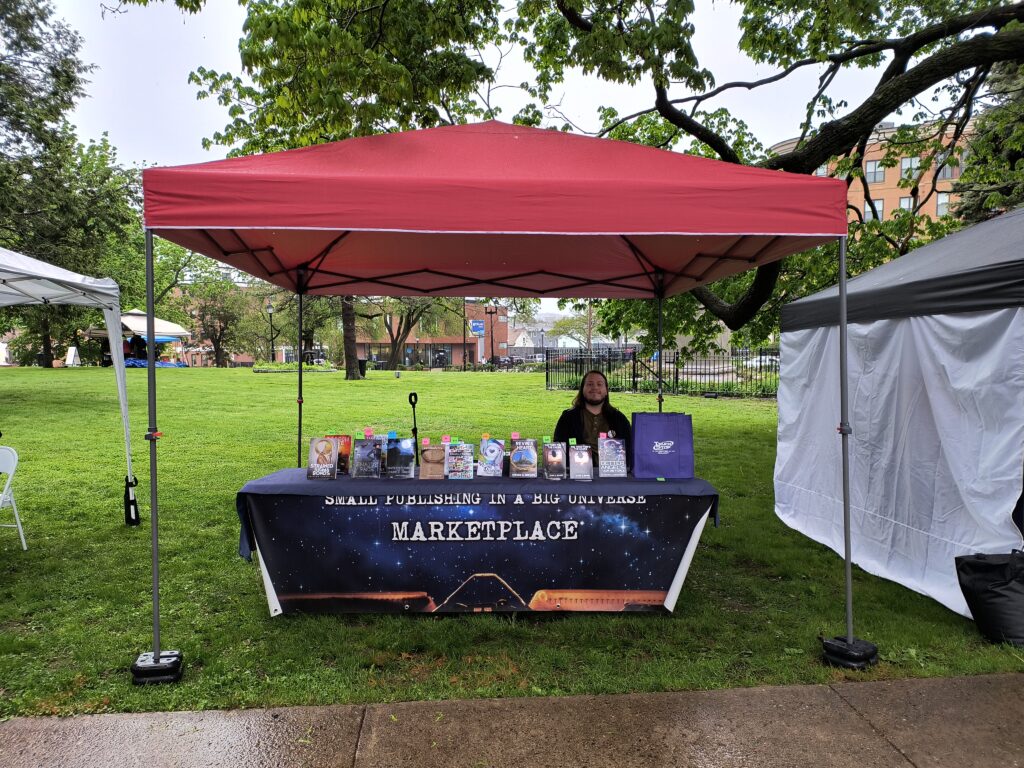
The Straw Dog Writers Guild arranged a table at the Northampton Antiquarian Book, Ephemera, and Book Arts Fair where authors could sell and sign books. I attended and had a two-hour shift at the Straw Dog table. Although I didn’t sell any books, I met some new people, reconnected with others, and had a great time.
The event was held at the Northampton Center for the Arts. It’s a fantastic building with many interesting spaces. The Straw Dog table was right in front of a counter that would have been great as a bar for a reception. Unfortunately they weren’t serving.
Most of the vendors were dealers in antiquarian and rare books, but there were a few literary organizations and specialty presses. As a group of current authors, Straw Dog was not a particularly good fit and few of the visitors seemed that interested in current work. It reminded me a bit of Boskone, where many attendees want to see books by Heinlein and Asimov, rather than new authors they’ve never heard of. And, at this event, what they really wanted were signed first editions.
I arrived very early, in hopes of getting a parking space and was rewarded by getting the very last one. I suspect that not arranging for vendors to be able to unload and park at a distance to let attendees use the limited parking probably limited the number of visitors a lot. But, at least, I didn’t have to schlep my books a vast distance when it came time for my shift.
I used the two hours before my shift started to wander through the whole space and see everything. There was a lot of really cool stuff. I love old books. The fact of the matter is, however, that I would be a very poor caretaker of them, so I never buy anything like that for myself. But it’s fun to look.
In addition to books, there were other interesting things. One artist had a book made with interesting handmade papers. There were various kinds of manuscripts (old property deeds and log books). One was printing with old type that had been recovered by the Yiddish Book Center. It was all fascinating.

When my shift started, I set up my books. I only brought a few copies, since I wasn’t expecting strong sales. But I also had a sign-up sheet for my mailing list; and cards to give away for myself, A Familiar Problem, and my proposed Amherst Book Festival. Plus some Airship Pirate stickers.
I spent the most time talking to the author next to me at the table. She was easy to talk to and we swapped stories while we waited for people to stop by. We would trade off talking to people that expressed interest in our books. I ended up buying a copy of the book she was promoting, Jingle These Bells, an inclusive holiday-themed romance anthology. Her story sounded fun.
I was pleased when Andrea Hairston came by the table. She let me pitch my books to her and expressed enthusiasm. We had served together on a panel at WriteAngles and I had seen recently that she has been selected as the speculative fiction instructor for the Lambda Literary Retreat for Emerging LGBTQ Voices this year. I mentioned that I had applied for the retreat last year, but was not selected. She warmly encouraged me to apply again this year, so I probably will.
In the end, I didn’t make any sales. But the time spent meeting and reconnecting with people was well worth it.








